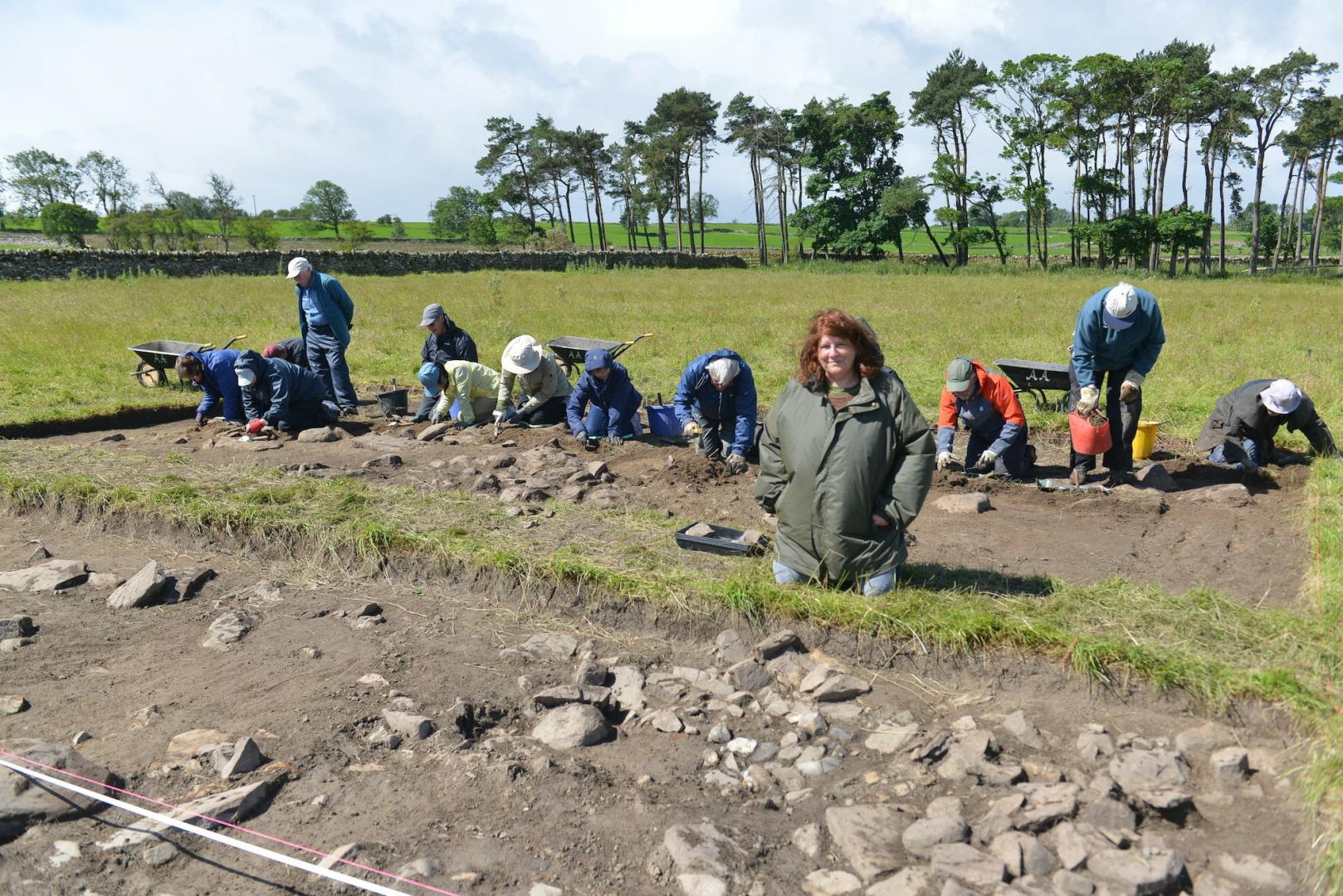ARCHAEOLOGISTS are hoping to learn more about prehistoric people who lived in the Greta Valley though an excavation at Gilmonby.
The area became famous in 1980 when the largest horde of Bronze Age finds in the north was unearthed during drainage works in a field near Plover Hall.
The latest dig, led by Durham University PhD student Beverley Still, is examining a stone structure. Along with other students and volunteers group Altogether Archaeology, she has visited the site each year since 2021.
The current digs were undertaken after a geophysical survey of about 75 hectares was carried out.
Ms Still said: “We found three late pre-historic settlements. We excavated one which is late Iron Age, the other two are probably late Iron Age, but you can’t tell unless you excavate.
“We excavated two cairns, piles of stone that were probably used for burial, and we excavated a burn mound.”
She explained that a burn mound is a pile of stones that would be heated and then dunked into water to make it hot – a theory is that this water would have been for a sauna, cooking, leatherwork or brewing beer.
Ms Still said: “The dates of that burn mound are early to mid-Bronze Age.
“What we are investigating at the moment is a stone structure that may be Bronze Age, it is too early to say if it is at the moment. We have bits of slag, but the slag doesn’t look like it might be iron slag so it may be bronze.”
The dig is to continue until the end of July and was made possible through funding from the Royal Archaeological Institute and the Society of Ancient Antiquities.
Ms Still extended her thanks to Geoff and Anne Godschalk of Plover Hall for allowing the digs to take place.
The group hopes to be back again next year.






